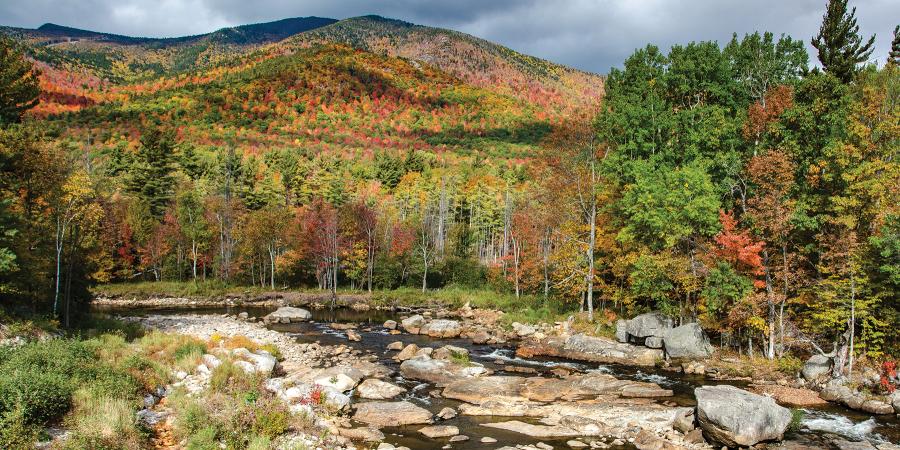A practical guide for making a difference at home and at work
The Ausable River & its Watershed
The magnificent scenery, ecological diversity, and clear waters of the Ausable River make it a jewel of the Adirondack region. Coursing down from the High Peaks, plunging over waterfalls and through steep bedrock gorges, then meandering through valley lowlands, the river creates extensive wildlife habitat, hardy forests, fertile valleys, and stunning landscapes before it empties into Lake Champlain.
Our watershed covers 512 square miles, includes 94 miles of river channel, 27 High Peaks, and is fed by more than 70 streams. The headwaters of the river’s East and West Branches begin on opposite shoulders of Mount Marcy. They join at Au Sable Forks, merging to form the Ausable’s Main Stem. Seven towns, eight hamlets, and one incorporated village lie within the watershed, which covers portions of two counties and includes roughly 20,000 year-round residents.
What is a Watershed?
Every inch of the earth belongs to a watershed, moving fresh water downslope to meet rivers, lakes, swamps, and, eventually, oceans. Watersheds are communities defined by the shape of the land and the flow of fresh water. Natural topography defines the boundaries of a watershed by directing flow downslope. Water moves soils and larger sediments, forming streams, ponds, wetlands, lakes, and floodplains, nurturing forests and fields, and creating interconnected land and water habitats for a diversity of plants and animals, and for human communities.
Why Stewardship?
Our communities owe much of their economic vitality—past and present—to the river’s health and resilience. Today, the Ausable River watershed is a destination for world-class trout fishing, wilderness hiking, rock climbing, paddling, and many winter sports, including downhill, backcountry, and cross-county skiing. It’s also a beautiful place to live. But without planning and wise stewardship, the clean, clear waters we depend on might be lost.
Watersheds provide the water we drink, the soil in which we grow our food, and the lakes and rivers we use for fishing, boating, and swimming. It’s no surprise that human activities—maintaining roads, building and living in homes, managing farms, using hiking trails, and more—influence water quality and stream health. But just as human activity creates challenges, your actions can help protect the watershed you live, work, and play in.
Caring for the Ausable River watershed—ensuring clean water and healthy streams, lakes, and wetlands—is essential to the health of our communities. This stewardship brochure outlines simple practices for residents and business owners that protect the Ausable watershed and keep our river and our drinking water healthy and clean.
